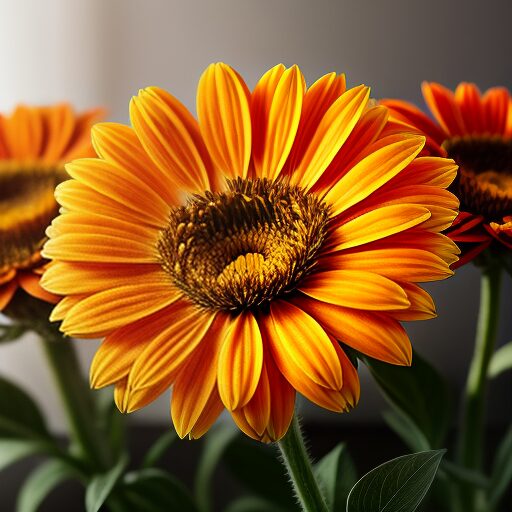Get your medicinal seed kit today
Sowing calendula seeds directly in spring is ideal, although indoor starts can also begin up to six weeks before the last frost date. Fill seedling trays with soilless seed-starting mix.
Calendula thrives in ordinary garden soil, though rich organic soil is preferable. It tolerates drought well and mulching in spring can help reduce weeds while keeping soil moist and providing essential soil hydration.
It’s a great addition to your garden
Calendula seeds are easy to sow into your garden each year, making this perennial plant an enjoyable addition. Simply sow them directly or start indoors up to six weeks before the last frost date and transplant them once the weather warms. Kids enjoy planting calendula thanks to its vibrant orange seeds that resemble curled snakes or ancient shells; once planted it’s important to water frequently until established; although calendula tolerates some drought conditions well.
Calendulas can thrive in full sun conditions, however they prefer some afternoon shade for optimal health. Reducing frost damage requires protecting plants with frost blankets the night before any forecast of frost or providing three to four inches of mulch. Pinching back young plants to promote more compact growth and prevent leggy growth is also helpful. The petals of flowers can be eaten, adding color and flavor to salads, vegetable dishes, herb butter and gourmet dips. Their peppery yet somewhat bitter flavor may serve as an alternative to saffron in certain recipes; others use dried petals in powder form as an instant source of saffron-esque hue in their food products.
These blooms of this easy-care annual are not only stunning to look at but are highly nutritious too, providing high levels of antioxidants to combat free-radical damage and boost skin health. In addition, their oil contains antifungal and antibacterial properties which make them great for immune support systems as well as natural insect repellents that also control nematodes.
To stimulate more blooms, pinch off spent flowers regularly. Be sure to water well throughout the gardening season and apply liquid bloom fertilizer every two to three weeks to calendulas; feed calendulas with this product too for maximum results! Finally, save seeds at harvest time so they may bring beneficial insects into your garden next year – these little treasures also serve as great ways of encouraging pollinator visits!
It’s a great addition to your kitchen
Calendula flowers add vibrant hues to salads, cakes, and breads as well as herbal medicines and warm compresses for treating sore throats and eye infections. Calendula’s bright petals make an excellent garnish in salads, cakes, and bread, while its petals can also be used medicinally in herbal medicines or used to create healing warm compresses to treat sore throats or eye infections. Easy to grow from seeds or transplants alike – planted directly in gardens or containers on sunny patios alike; its mild fragrance makes it perfect for meadow gardens or flower borders while its drought-resistant nature makes it. suitable as an edger between vegetable gardens!
Calendula grows best in full sun but tolerates partial shade, in most soil types with pH between 6-6-7, but performs best in rich, well-drained soil with an ideal moisture level and drainage. Calendula seeds should be planted directly into the garden after ground temperatures have reached 60 and all danger of frost has passed; cover thinly sown seeds with 1/4 inch of soil so they may germinate quickly and be mature within one or two weeks; transplants can then be purchased from garden centers to be grown as annuals in herb, flower, or vegetable gardens. Calendula may look intimidating, but growing and maintaining it doesn’t need to be difficult. These low- maintenance plants require only occasional watering – occasional mulch can reduce weeds while keeping soil moisture levels evenly balanced; fertilizer applications usually aren’t needed, but if the garden soil lacks vital nutrients a light application of slow-release or organic liquid fertilizer may prove helpful.
Calendula flowers add not only beauty and fragrance to a garden, but also attract beneficial insects like butterflies, bees, and lacewings that pollinate other garden plants while controlling aphid populations. Furthermore, calendula nectar provides vital pollination assistance in permaculture systems by pollinating fruit trees directly with bee pollination services.
Calendula flowers can be used fresh or dried in salads, soups, cakes, cookies, and bread dishes; or used fresh as an addition to salads and soups. In addition, their flowers can also be pressed for oil or made into medicinal tea for therapeutic purposes. Lastly, seeds from these plants can also be saved for sowing in future growing seasons if necessary; ask any friend with calendula plants at the end of this growing season if they would mind saving you some!
It’s a great addition to your skincare routine
Calendula is an excellent skin-care ingredient because of its powerful antioxidants such as carotenoids and flavonoids, which have been shown to promote healing, boost hydration, and reduce inflammation while simultaneously smoothing out fine lines, wrinkles, and scars and protecting from further oxidative damage that leads to premature aging.
Calendula can be used in numerous ways, ranging from topical creams and essential oils to facial masks and more. You can find calendula at most health food stores or online. Before using any new skin product, however, always do a patch test first: simply apply some to your inner wrist for 24 to 48 hours;
if any redness or itching develops during that period, then discontinue use immediately. Calendula also contains antimicrobial properties that may help treat skin conditions like dandruff, rashes, and acne that stem from overgrowth of bacteria or fungi; calendula’s antimicrobial properties
help balance out these microbes to ensure healthy conditions on your skin. One of the many great things about calendula is its gentle formula that’s suitable for use on sensitive skin, making it a fantastic solution for people living with eczema, rosacea, or psoriasis. Furthermore, calendula boasts natural brightening properties which may help even out uneven pigmentation for an improved complexion and more even pigmentation levels.
Calendula boasts excellent antioxidant properties that can protect against oxidative damage and slow the aging process, thanks to the flavonoids and carotenoids present. By neutralizing free radicals responsible for various health issues, calendula offers multiple health advantages. Calendula flowers contain vitamins A and E, both natural fatty acids that nourish skin cells while fighting signs of aging. Furthermore, calendula can enhance other anti-aging ingredients like retinol or vitamin C that have proven their efficacy by adding moisture retention.
It’s a great addition to your home remedies Calendula is an easy-to-grow flower that can be directly seeded into the garden or planted into seed trays for transplanting later. Preferring full sun but also flourishing under part-shade conditions, its flowers feature shades of yellow and orange that bloom all summer long. Calendula makes an eye-catching annual addition to cottage gardens, meadow gardens, Mediterranean gardens, and cut flower beds, plus thrives well if kept frost-free in containers.
Herbal tea made with this herb has also been shown to help relieve digestive issues and relieve inflammation in the mouth and throat, treat ear infections in children, as well as treat allergies like hay fever or dermatitis rashes. It may even reduce stress. Calendula oil may help diminish stretch marks and scars by softening skin cells and stimulating collagen production, thus helping soften stretch marks and scars over time. If you are sensitive to other members of the daisy/aster family like ragweed, do a patch test before applying this oil directly onto your skin. Calendula has long been used as an effective natural insect repellent. Its blossoms have been found to ward off aphids and whiteflies, protecting vegetables like chard, carrots, or tomatoes from these pesky insects. Calendula plants may be grown indoors as potted plants or in window boxes for additional security against these insects.
If you’re new to growing calendula seeds, try sowing them in early spring or indoors four to six weeks before the last frost date. They thrive best in either full sun or partial shade conditions with light, loose soil conditions. Also, add compost or aged manure into the soil before sowing calendula seeds as this encourages healthier plants with more blooms!
Many people find calendula an invaluable companion plant for vegetable crops, as it draws beneficial pollinators while discouraging pests like deer and rabbits from damaging them. Calendula makes an especially good companion for Cole crop vegetables such as collard greens, broccoli, and Brussels sprouts; additionally, it can even act as a natural insecticide when planted alongside lettuce and spinach plants for improved security against insects.

